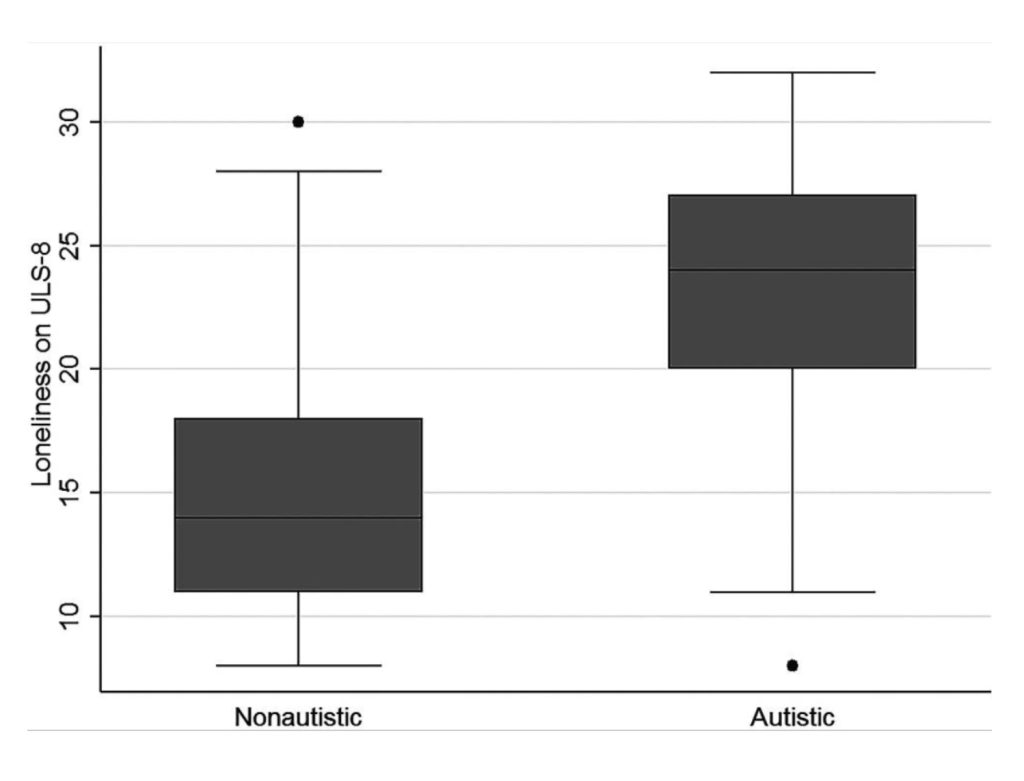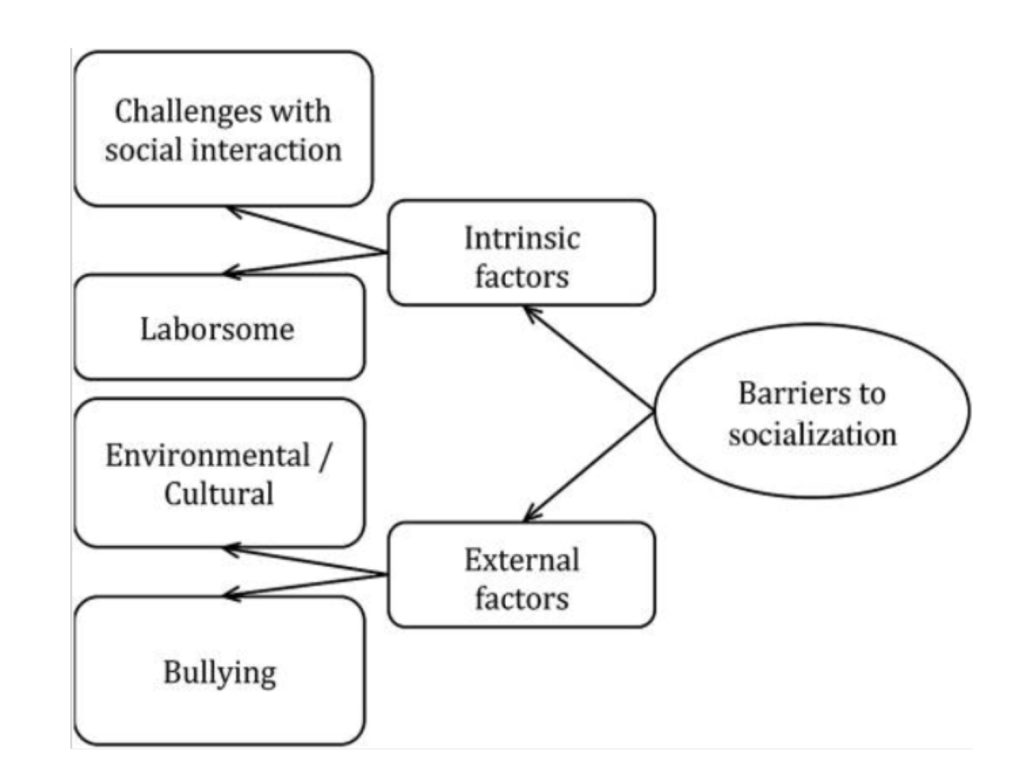38 Social Connectivity in Neurodivergent Individuals
Aimee Hamblin
Author Biography
Aimee Hamblin is a sophomore at Utah State University. Born and raised in Utah, they are the youngest of four siblings. Aimee has a great passion for reading and writing; they also have a special interest in poetry and music. When they aren’t playing with their dogs, Aimee enjoys geeky pastimes such as watching Doctor Who and Cosplaying. Aimee is enrolled in school full-time and is working towards a degree in Creative Writing.
Writing Reflection
Throughout my life, as someone with ADHD and ASD, I have navigated the intricate landscape of neurodivergence and grappled with the unique set of challenges that come with it. Loneliness, in particular, emerged as a recurring theme, casting a profound shadow on the personal life and college experience of me and my neurodivergent peers. I want to raise awareness of this crucial aspect of our experience that often goes unnoticed—the impact of loneliness on neurodivergent individuals and the disproportionate challenges we face with social connectivity.
This essay was composed in December 2023 and uses MLA documentation.
“School is the loneliest place on earth.” In “Perceived Loneliness Among Young Children with ASD [Autism Spectrum Disorder]”, a mother disclosed to researchers that her 5-year-old child repeatedly shared this sentiment (Zeedyk). Loneliness and isolation disproportionately impact the neurodivergent community. This experience carries through their lives and is detrimental to their health and future.
Neurodivergence is an umbrella term that denotes variation in mental function. This term covers conditions such as Autism Spectrum Disorder [ASD], Attention-Deficit/Hyperactivity Disorder [ADHD], Dyslexia, Tourettes, and other learning disabilities and neurological disorders (Gregory). In contrast, the term neurotypical refers to those whose neurological development and functioning are within the “typical range”. While my emphasis lies predominantly on ASD and ADHD, the overlapping nature of these concerns means that many issues addressed in this exploration apply to individuals identifying across the neurodivergent spectrum.
Each experience is unique, but here are common characteristics shared across neurodivergence:
- Differences in Cognitive Processing: Variations in how information is processed, thought, and perception of the world. This can manifest as unique cognitive styles and approaches.
- Sensory Sensitivities: Heightened or diminished sensitivities to sensory stimuli, such as light, sound, touch, taste, or smell.
- Repetitive Behaviors: Repetitive behaviors, known as “stimming,” are often observed. These can include actions like hand-flapping, rocking, or repeating phrases and gestures.
- Communication Differences: Language and communication difficulties are prevalent. This may include challenges in expressive or receptive language and differences in intonation and prosody.
- Emotional Regulation: Neurodivergent individuals may experience challenges in regulating emotions. Emotional responses might be intense or atypical, impacting their ability to navigate social situations effectively.
- Specialized Interests: Many develop intense and focused interests in specific topics. These interests may become a source of expertise and comfort (Healthdirect).
It’s important to note that neurodivergent traits are not inherently negative; they represent natural variations in human neurology. Understanding and appreciating these differences contribute to supportive environments.

The visual above highlights the increased levels of loneliness in adults on the autism spectrum. Data from the Australian Longitudinal Study of Adults with Autism (ALSAA), conducted by the Cooperative Research Centre for Living with Autism (Autism CRC), was utilized for this graph. The study included 220 autistic adults and 146 nonautistic adults. Researchers used the University of California, Los Angeles (UCLA) loneliness scale (ULS-8) to collect and contrast levels of loneliness in both autistic and Non-autistic adults. Regression models were employed to explore the relationships between loneliness and various factors, including demographics, autistic traits, social support, depression, anxiety, and self-efficacy, based on De Jong-Gierveld’s loneliness model. Figure 1 depicts the distribution of ULS-8 scores, revealing a higher median score in the autistic group (Median = 24) compared to the nonautistic group (Median = 14).
Neurodivergent individuals consistently report a diminished quality of life, marked by heightened levels of depression, anxiety, and loneliness when compared to their neurotypical counterparts (Capp). They are also more likely to be the victims of bullying and abuse. Beyond independent well-being, the impact extended to their social realm, where lower-quality relationships were prevalent. Notably, neurodivergent people faced a significant likelihood of not experiencing consistently fulfilling romantic relationships. This intricate interplay emphasizes the multifaceted challenges that the neurodivergent navigate (McLeod).

The chart above depicts the complexity and causes of barriers that neurodivergent individuals face in social dynamics. In the aforementioned ALSAA study, inductive thematic analysis was carried out on open-ended responses provided by autistic participants, focusing on their socialization experiences. Participants highlighted both intrinsic and external factors influencing their socialization experiences. Many expressed challenges related to social skills, such as initiating interactions, understanding cues, and engaging in conversations within large groups, leading to feelings of isolation and withdrawal. Some participants felt misunderstood, expressing thoughts such as: “I think I come off to others as aloof when that’s not how I am,” and “They cannot ever understand what really goes on in my atypical mind.” While some participants recognized the importance of conversational nuances like discourse markers and cues, they found them to be “nonsensical phrases” and exhausting to navigate. Many conveyed the drainage from having to prepare mentally and the desire for socialization without feeling fatigued afterward.
Symptoms posed by neurodivergence can impede conversation reciprocity and hinder the development of age-appropriate friendships. These actions, often coping mechanisms or expressions of neurodivergent experiences, inadvertently contribute to the social hurdles faced while navigating the intricate dynamics of peer relationships. This can involve challenges in understanding social cues, maintaining eye contact, or navigating complex social dynamics. Behaviors associated with neurodivergence, such as stimming and hyperactivity, may be perceived as unusual by peers, leading to social rejection and exclusion (Jaisle).
The ostracization of neurodivergent individuals is often enhanced by stigmas and stereotypes. These include the assumption that all those within a specific neurodivergent category share identical traits, associating neurodivergence with intellectual limitations, and believing that they are universally socially awkward or incapable of forming meaningful relationships. Additionally, some misconceptions involve viewing neurodivergence solely as a pathology rather than acknowledging it as part of natural human diversity and assuming that they lack empathy or the ability to understand others’ emotions. One of the most common misinterpretations is that neurodivergent individuals, regardless of age, are “mentally children;” and therefore too cognitively inept to live independently or engage in romantic relationships. Addressing these stereotypes is crucial for fostering understanding and promoting inclusivity.
Quality social connections elevate the likelihood of survival by 50%, whereas those grappling with loneliness tend to face premature mortality, irrespective of the cause. The effects of loneliness go beyond mere emotional distress, posing significant threats to both individual and societal well-being. Repercussions include an increased risk of cardiovascular disease, dementia, stroke, depression, anxiety, and premature death. The mortality consequences of social disconnection mirror those faced by smoking up to 15 cigarettes a day (Office of the Surgeon General).
Isolation and loneliness are difficult subjects to quantify. “Loneliness is a subjective internal state. It’s the distressing experience that results from perceived isolation or unmet need between an individual’s preferred and actual experience” (Office of Surgeon General). Loneliness can manifest despite physical proximity to others and is personal, varying in intensity and duration. Loneliness is an epidemic that directly impacts our mental and physical well-being. Isolation can be detrimental and underscores the significance of addressing this pressing topic.
Community is a crucial resource for neurodivergent people. It provides a much-needed support system for physical and emotional needs. In this shared space, those with neurodivergent conditions find a sense of belonging, understanding, and acceptance. Engaging with people who have comparable experiences is valuable, as it cultivates a sense of camaraderie and mutual support. Beyond the practical support provided, the emotional connections forged within the community establish a nurturing atmosphere where people can openly express themselves. Additionally, the diversity of experiences within the community facilitates the development of empathy, promoting a deeper understanding of varying support needs, whether high or low. Ultimately, this sense of common ground becomes a cornerstone for fostering inclusivity and resilience within the neurodivergent community.
While creating inclusive environments for neurodivergency is an admirable goal, it presents challenges in practical implementation. Availability of adequate resources may be limited, both in terms of funding and trained personnel, hindering the comprehensive adoption of inclusive practices. Striking a balance between inclusivity and the varied requirements of neurodivergence remains a complex task, requiring thoughtful consideration and nuanced strategies for successful implementation.
Many may question the relevance of the subject. Why should we cater to this minority? Addressing the needs of neurodivergence is a crucial stride in nurturing a society that is genuinely inclusive and equitable. “Diversity and inclusion make us stronger, smarter, more creative, and more innovative” (Blinkin). Recognizing and accommodating neurodiversity not only upholds principles of equality but also harnesses the unique talents and perspectives that neurodivergent individuals bring. By creating environments that cater to diverse cognitive styles, we tap into a wealth of untapped potential, fostering innovation and creativity. Moreover, it promotes mental well-being, enhances overall community resilience, and reinforces the idea that every individual deserves the opportunity to thrive and contribute meaningfully to society regardless of neurological differences.
To truly impact the lives of neurodivergent people positively, society must actively work towards destigmatizing and embracing neurodiversity. Encouraging empathy and understanding and celebrating the unique perspectives neurodivergence brings to the table. Educational institutions, workplaces, and communities play a pivotal role in fostering understanding and acceptance. Tailored support systems, sensory-friendly spaces, and educational initiatives promoting awareness contribute to more inclusive social environments, enabling neurodivergent individuals to thrive.
Works Cited
Blinken, Anthony J. Secretary of State. “Investing in Diversity and Inclusion at State.” United States Department of State, https://www.state.gov/investing-in-diversity-and-inclusion-at-state/
Capp, Simone J., et al. “COVID-19 and Perceived Changes to Quality of Life, Anxiety, Depression, and Loneliness in Autistic and Other Neurodivergent U.K. Adults.” Autism in Adulthood: Challenges and Management, vol. 4, no. 3, Sept. 2022, pp. 233–46. PubMed Central, https://doi.org/10.1089/aut.2021.0078.
Gregory, Erin. “What Does It Mean To Be Neurodivergent?” Forbes Health, 4 Oct. 2022, https://www.forbes.com/health/mind/what-is-neurodivergent/.
Healthdirect Australia. Neurodiversity and Neurodivergence. 16 Nov. 2023, https://www.healthdirect.gov.au/neurodiversity-and-neurodivergence.
Jaisle, Emma M., et al. “Linking ADHD and ASD Symptomatology with Social Impairment: The Role of Emotion Dysregulation.” Research on Child and Adolescent Psychopathology, vol. 51, no. 1, Jan. 2023, pp. 3–16. DOI.org (Crossref), https://doi.org/10.1007/s10802-022-00982-6.
McLeod, Jane D., et al. “The Experiences of College Students on the Autism Spectrum: A Comparison to Their Neurotypical Peers.” Journal of Autism and Developmental Disorders, vol. 49, no. 6, June 2019, pp. 2320–36. DOI.org (Crossref), https://doi.org/10.1007/s10803-019-03910-8.
Office of the Surgeon General. “Our Epidemic of Loneliness and Isolation.” U.S. Department of Health & Human Services, 2023, http://www.hhs.gov/sites/default/files/surgeon-general-social-connection-advisory.pdf.
Zeedyk, Sasha M., et al. “Perceived Social Competence and Loneliness Among Young Children with ASD: Child, Parent and Teacher Reports.” Journal of Autism and Developmental Disorders, vol. 46, no. 2, Feb. 2016, pp. 436–49. Springer Link, https://doi.org/10.1007/s10803-015-2575-6.

